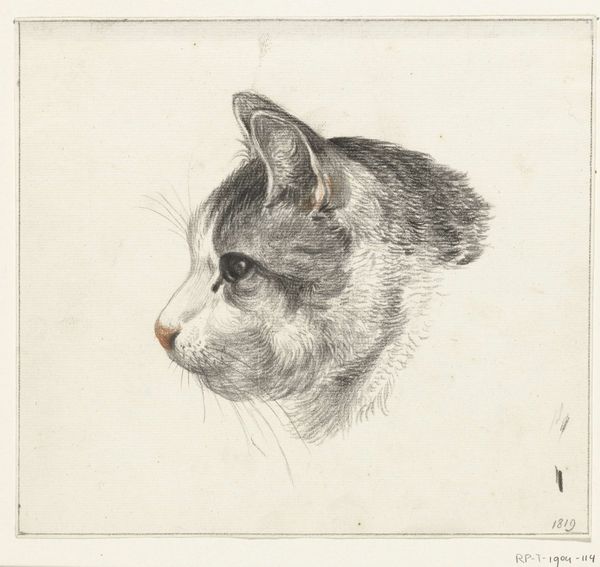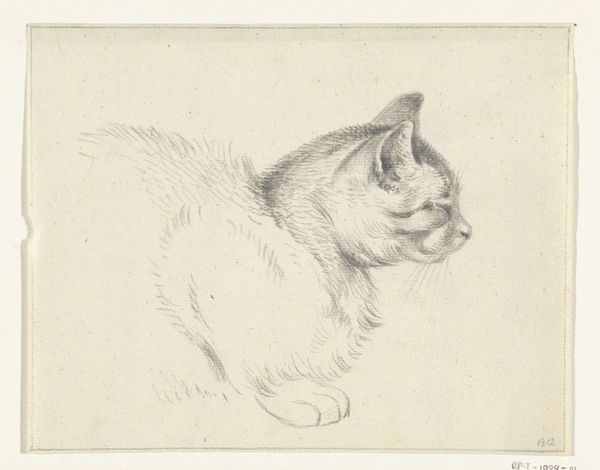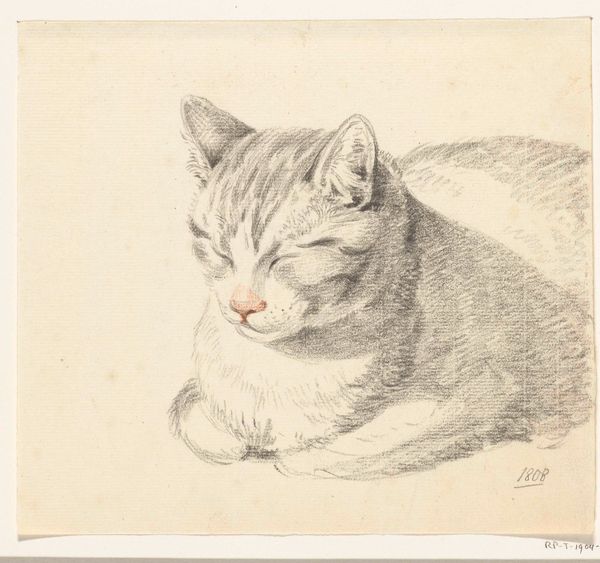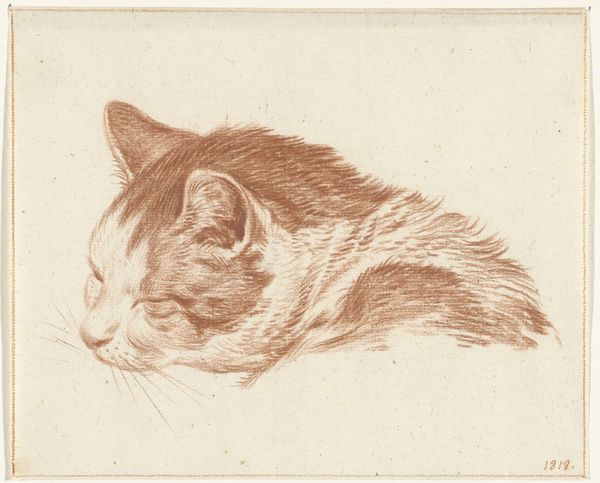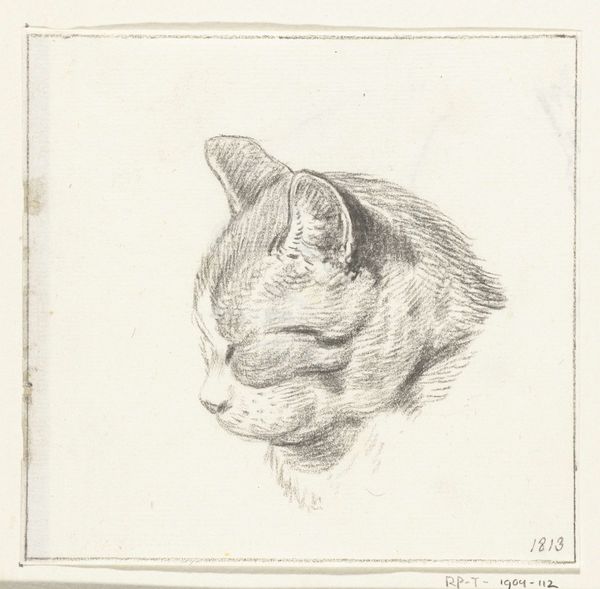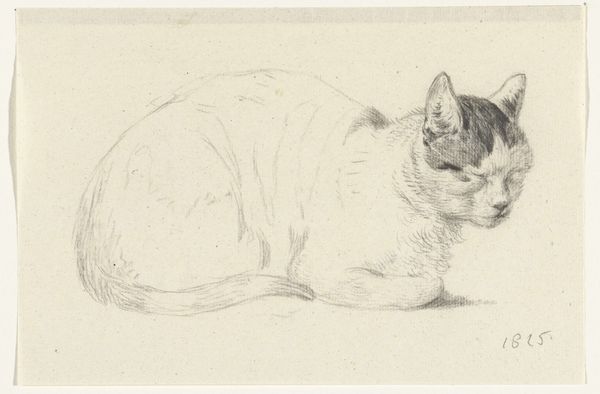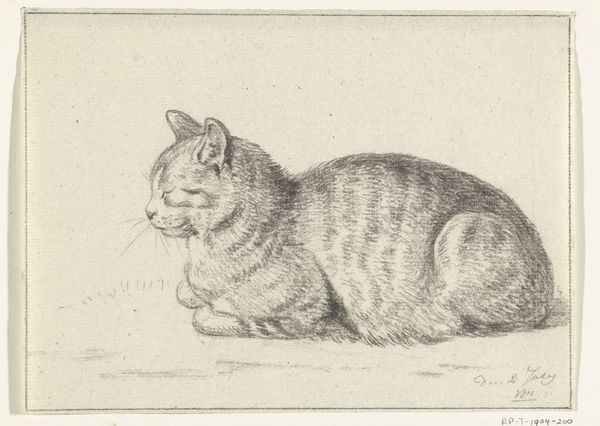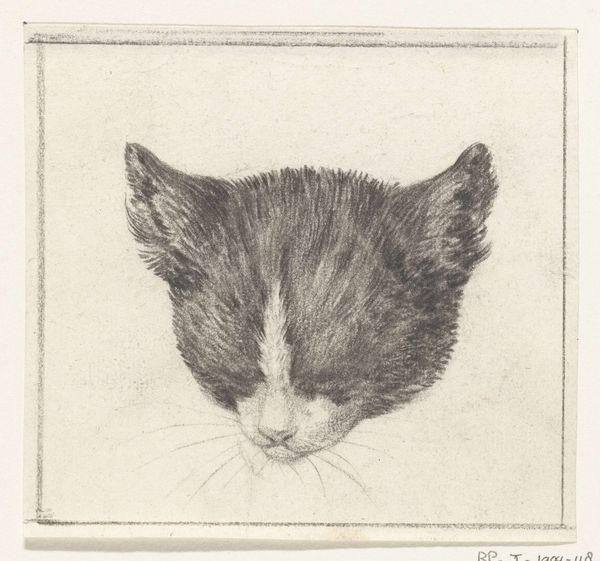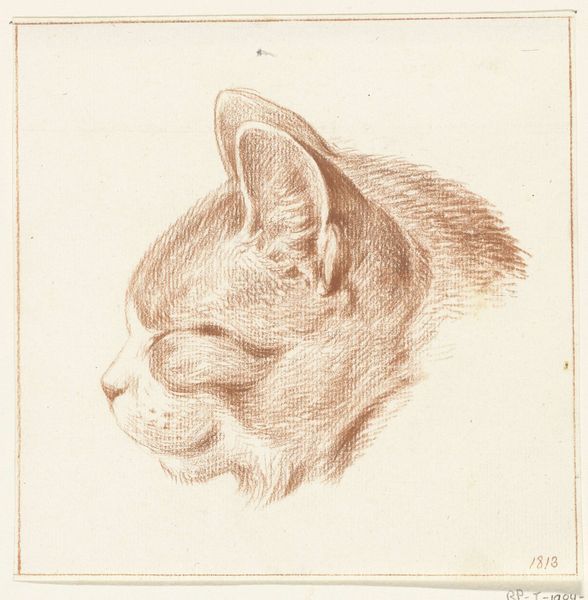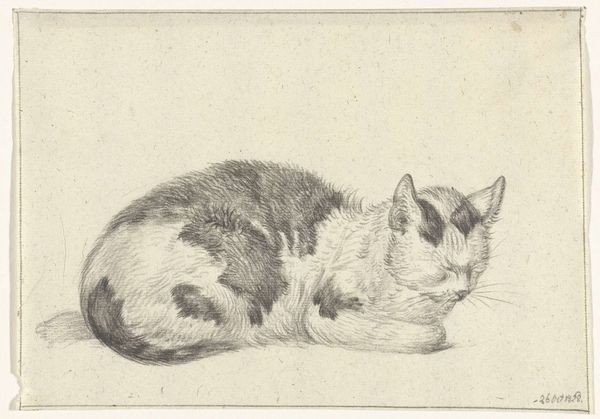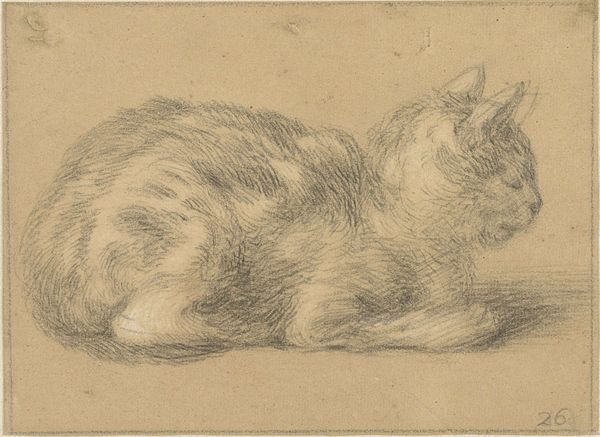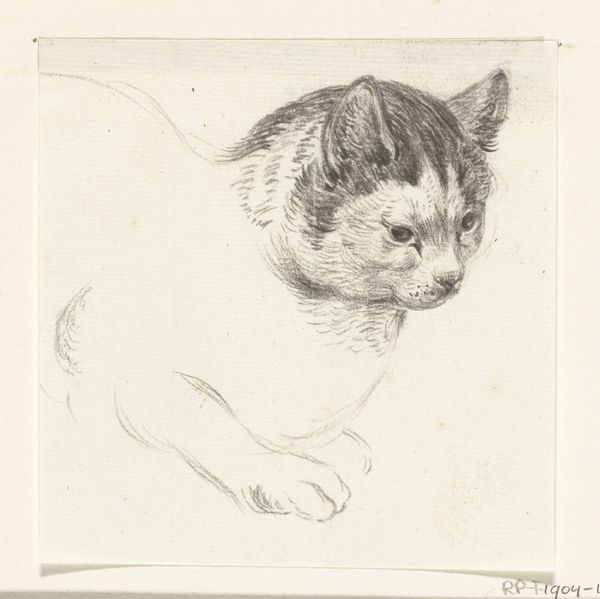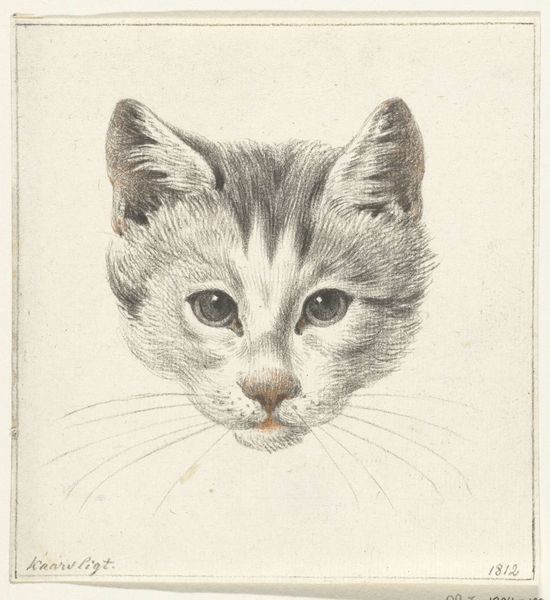
drawing, pencil
#
portrait
#
pencil drawn
#
drawing
#
pencil sketch
#
pencil drawing
#
pencil
#
realism
Dimensions: height 130 mm, width 160 mm
Copyright: Rijks Museum: Open Domain
Editor: This is "Head of a Cat, facing left," a pencil drawing from 1813 by Jean Bernard, housed in the Rijksmuseum. The rendering feels quite serene and detailed, given the simplicity of the medium. What catches your eye, looking at this work? Curator: I observe the masterful manipulation of line and tone to create form. Note the delicate hatching and cross-hatching; they are distributed unevenly, rendering both texture and light. Do you see how the artist builds up density to describe the musculature of the cat’s head, and how sparse marks suggest the texture of the fur? Editor: Yes, I notice the variations. The ear is less defined, fading into the background almost. It makes the focused details, like the whiskers and the soft shading around the eye, stand out even more. Curator: Precisely. Consider the relationship between these sharply defined contours and the more atmospheric passages. It isn’t merely a mimetic representation, but a study in contrasts. Bernard compels us to analyze how he models depth and surface with simple tonal shifts, making sophisticated use of what might otherwise be seen as rudimentary marks. It emphasizes the two-dimensionality, without relinquishing the illusion. Editor: So it's the interplay between line, tone, and texture, not just the subject matter, that makes the drawing significant? Curator: Indeed. It's a remarkable formal exercise using minimal means to suggest maximal presence, to evoke realism. The beauty lies in that controlled tension between absence and presence. Editor: That's a fresh way to think about a drawing. I was so focused on the subject, the sleeping cat, but now I better appreciate the technique.
Comments
No comments
Be the first to comment and join the conversation on the ultimate creative platform.
